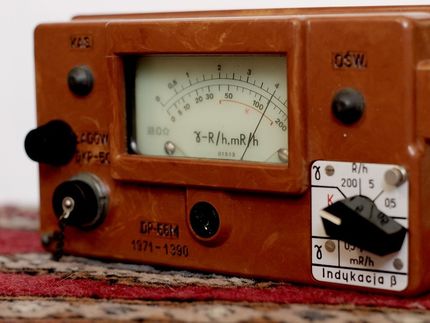How to measure oxygen coefficient in complex oxides
Advertisement
Scientists of the Faculty of Chemistry of the Lomonosov Moscow State University under the leadership of Prof. Yury Teterin and in cooperation with Russian and British colleagues have developed a technique, which provides an opportunity of quantitative evaluation of oxygen coefficient of uranium in complex oxides. Information about uranium Oxidation state, oxygen coefficient in complex uranium oxides UO2+x and their ionic composition (U4+, U5+, U6+) has great scientific and economic value.
UO2+x is a generalized formula of all complex uranium oxides and it's written so just because uranium in this substance could have simultaneously several oxidation states. Oxygen coefficient determines stoichiometry of complex uranium oxide, showing how many oxygen atoms fall on one uranium atom in the chemical formula.
Oxygen coefficient determination is necessary for creation of the following technologies: development of uranium deposits; preparation of nuclear reactor fuel; prognostication of processes, which accompany uranium fission in reactors; establishing of radioactive nuclear waste disposal templates. And, finally, development of technologies used for environmental rehabilitation from radioactive nuclear waste.
Researchers used the method of X-ray photoelectron spectroscopy (XPS) and different X-ray diffraction methods. XPS turns out to be the most effective method for determination of uranium oxidation state, along with other chemical elements of actinide series. This method is based on photo-effect and receives pulses from electrons from different atom energy levels. For instance, the U 4f line in spectrum means that analyzer has got an electron of the f-orbit, which is located on the fourth in succession (counting from the core) electronic shell.
Scientists have proved that correct value of oxygen coefficient in UO2+x can't be obtained with the help of information about values of the U 4f peak intensities and the O 1s electrons of core levels. So, scientists have applied peak intensity of the outer U5f electrons for quantitative evaluation of the oxygen coefficient. This approach was put in the basis of the new technique.
"Our technique rests on the results of wide experimental and theoretical research of the nature of chemical bound in uranium oxides. It's physically based and allows to get the most correct results," - shares one of the article authors - the Leading Researcher in the Department of Radiochemistry, the Faculty of Chemistry of the Lomonosov Moscow State University, Doctor of Sciences in Physics and Mathematics, Professor Yury Teterin.
Method of X-ray photoelectron spectroscopy (XPS) was used for study of both polycrystalline and non-crystalline samples of uranium oxides. In order to get XPS reference spectra scientists have exploited monocrystalline films of separate uranium oxides. Such spectra are necessary for comparison with corresponding theoretical spectra and also for examination of the effect that radiation damages of samples have on them. At present obtaining of such films turns out to be another problem, which was solved in the published work in cooperation with foreign collaborators.
"Finally, it was established that 129Xe23+ xenon ions irradiation of monocrystalline films results in significant violation of long- and short-range order in structure and, besides that, inincrease of uranium oxidation state. The same processes proceed in a nuclear reactor. The obtained results are proved by X-ray diffraction analysis data, which was also used in our research," - says Yury Teterin.
While studying of influence ofuranium and argon ions irradiation on of UO2 monocrystalline films, it was found out that on the uranium oxide surface a stable phase of uranium oxide - UO2.12 is formed. Its oxygen coefficient is 2.12. The composition of this phase in broad range doesn't depend on irradiation intensity and temperature of sample annealing. This trend would be developed in further researches.
The fundamental scientific task of researches is determination of oxidation state, ion composition and the nature of chemical bound of actinide compoundson the basis of XPS fine structure parameters, their core and outer electrons.
Research results could be used in all stages of nuclear power generation: starting from uranium ore production and finishing with transmutation of spent fuel.They could serve the purpose of establishing of radioactive nuclear waste disposal templates and also could be applicable for development of technologies for environmental rehabilitation after technological accidents, caused by radioactivity.
Original publication
Other news from the department science
Most read news
More news from our other portals
See the theme worlds for related content
Topic World Spectroscopy
Investigation with spectroscopy gives us unique insights into the composition and structure of materials. From UV-Vis spectroscopy to infrared and Raman spectroscopy to fluorescence and atomic absorption spectroscopy, spectroscopy offers us a wide range of analytical techniques to precisely characterize substances. Immerse yourself in the fascinating world of spectroscopy!

Topic World Spectroscopy
Investigation with spectroscopy gives us unique insights into the composition and structure of materials. From UV-Vis spectroscopy to infrared and Raman spectroscopy to fluorescence and atomic absorption spectroscopy, spectroscopy offers us a wide range of analytical techniques to precisely characterize substances. Immerse yourself in the fascinating world of spectroscopy!





























































